I played the 'Kings Dilemma' in which the prestigious aristocrats who support the king fight for power while helping political decisions.

Complete Japan of the game 'Kings Dilemma ' where you can enjoy story development while proposing or disagreeing with various problems of domestic and foreign affairs as a member of the council that assists the king's politics by becoming the patriarch of a prestigious aristocrat of the Ankist kingdom. The language version has been released by Hobby Japan. Fiscal 2020
Kings Dilemma | | ANALOG GAME INDEX
http://hobbyjapan.games/kings-dilemma/
Please note that this game contains some spoilers due to the nature of the legacy system, so please be careful if you want to play without knowing anything about the story or card contents.
◆ Package and contents
As the name suggests, the 'Kings Dilemma' package has an illustration of a king who is worried about his head.

The target age is 14 years old and over, the number of players is 3 to 5, and the play time of one game is assumed to be 60 minutes. This time I will play with 5 people.

The contents are a rule manual, 12 family screens, and 1 world map.

The family screen has the symbols and patterns of the aristocrats that make up the council.

On the back side, in addition to the aristocratic title and 'creed of the family', the achievements that are activated depending on the progress of the game and the family number are written. Everything on the back of the family screen depends on the aristocrat.

The world map is not absolutely necessary for the progress of the game, but it is a map that shows the terrain that appears in the story of the game at a glance, and it is an item that deepens the understanding of the world view.

There were also tokens in the box. It fits in cardboard and has cuts, so it can be removed without using scissors or a cutter.

A kingdom board showing the state of the kingdom's internal affairs.

There are a total of 15 cover tiles, which are the same size as the cards, and 3 types of abstention, approval, and disapproval kingdom cards, and 6 'secret policy' cards.

The inner box looks like this. It contains a large number of envelopes, and it is a mechanism to open the specified envelope as the game progresses.

There is a slot in the inner box so that you can discard some of the used cards here.

The 177 chronicle stickers are bound in one volume.

Twelve mystery stickers that reveal the contents when you clear one big scenario in the game.

◆ Preparation for the game
Place the Kingdom board on your desk and place the 'Stability Token' and 'Resource Token' in the center of the Kingdom board. From the left, resource tokens show 'influence,' 'economic power,' 'vitality,' 'welfare,' and 'civilization.'
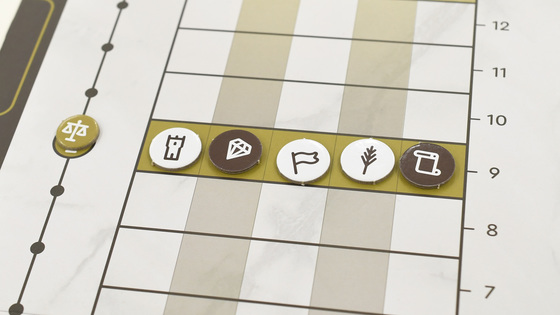
Then give out a family screen to all the players. This time, I dared to choose the one with my favorite emblem and pattern without looking at the contents on the back side, but after each player carefully read the setting of the family screen and the world view in advance, I am the most role-playing It is also an ant to choose something that is easy to do. The family screen has creases, and you can use it upright like the image.
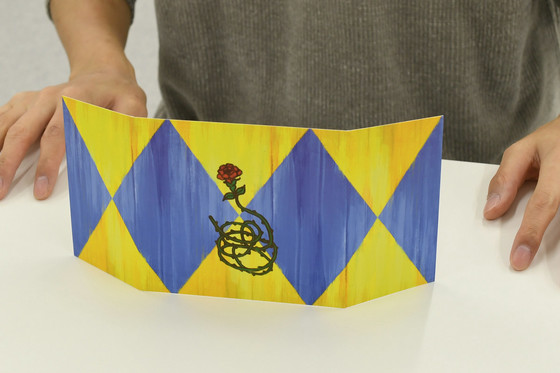
Then, write down the name you thought of on the family name on the family screen.

Distribute power tokens to each player for a total of 8 and coin tokens for a total of 10. The power token and coin token are 5 for large ones and 1 for small ones, respectively. These tokens are an important asset to the family and are hidden inside the family screen so that they are not known to other aristocrats.

Set aside the surplus power tokens and coin tokens as a 'shared pool'.

In addition, each player takes six 'Secret Policy' cards in turn. The order of taking is determined by the 'fame' of the family, which will be described later, but the first time there is no fame yet. Therefore, the aristocrat with the lowest family number first selects and eliminates one of the six cards, and then selects one of the remaining five cards. After that, select one by one from the aristocrats with the smallest family number.
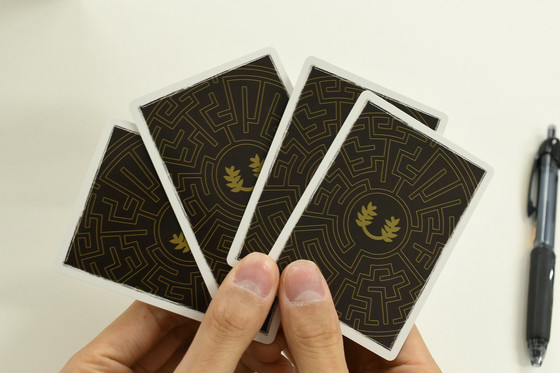
Of the secret policy cards I got, for example, the 'Rebellion' card looks like this. The secret policy card is related to the score calculation at the end of the game, and each aristocrat gains 'fame' and 'greed' according to the score. The King's Dilemma is a game in which the 'King's reign' is one game, and each aristocrat gains fame and greed while carving the history of the kingdom while supporting the king for generations. It has become.
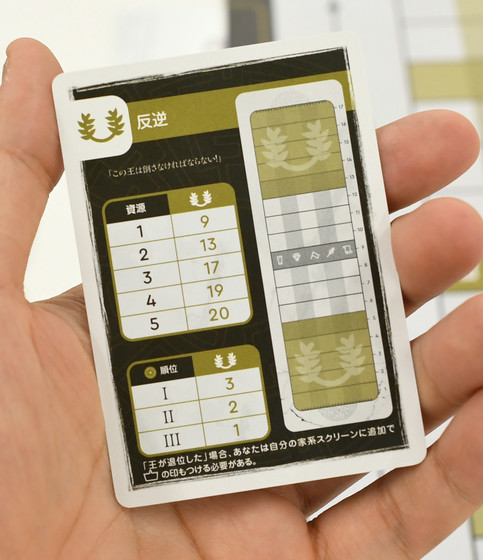
Then, 3 types of voting cards will be distributed to each player. Place the voting card in front of the family screen so that everyone can see it. Now you are ready.

◆ Start the game
For the first gameplay, first remove the envelope labeled '00'.
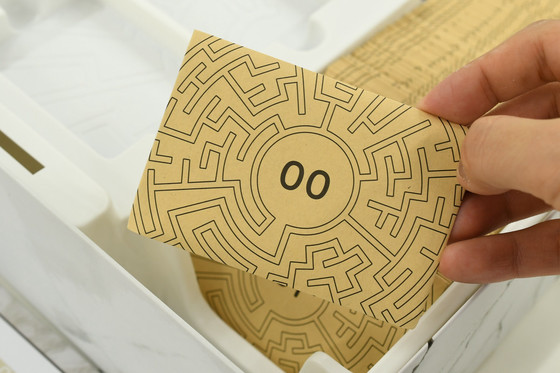
There are 4 cards inside. The top is the story card and the bottom three are the dilemma cards.
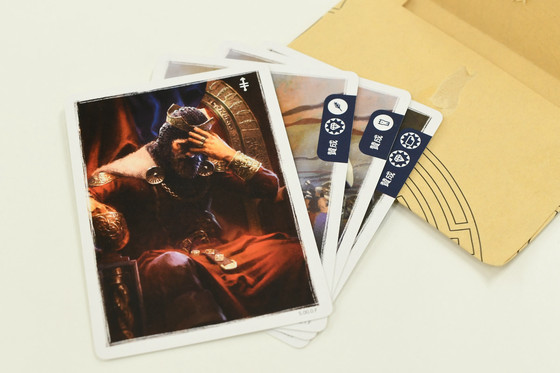
The story that introduces the game is written on the back of the story card, so read it aloud. In the rule manual, it was written that 'anyone can read', but if you decide one of the players to play the role of narrator and leave the story to be read aloud and the place to be partitioned, the game will proceed smoothly. The first story is that Harald V, who became the king of the Ankist kingdom, is worried about his reign.
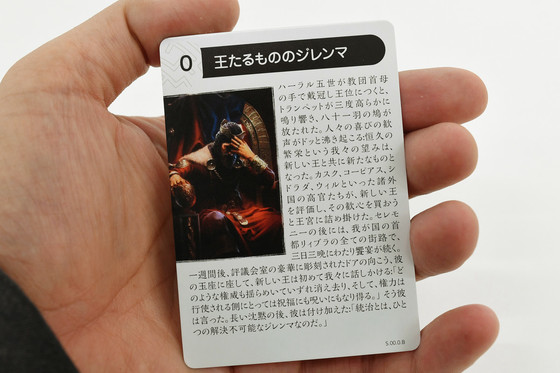
After reading the story card, check the symbol mark on the upper right of the surface and place it on the Kingdom board where the same mark is written.
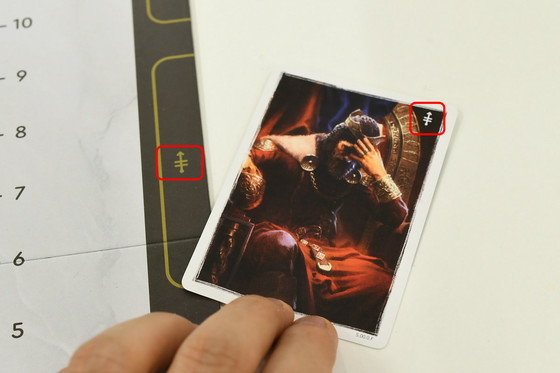
For the remaining dilemma cards, shuffle the front and back as they are, and then place the cover tiles on top. This is the dilemma deck, and various problems of foreign affairs and domestic affairs that are worrisome to the king's head are piled up.

Five players ... the council of aristocrats solves that problem. It is this leader token that has the most leadership in the council. For the first time, the aristocrat with the highest family number will have the token and become the 'leader'.
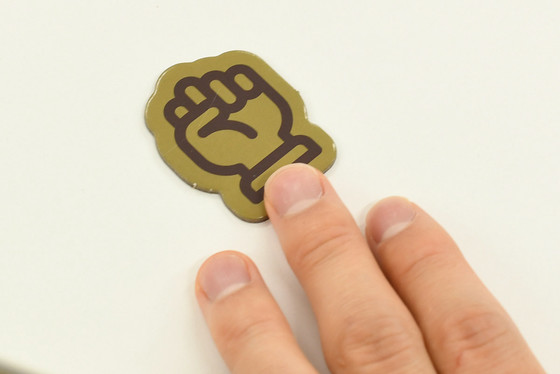
Next, the aristocrat with the smallest family number has the mediator token that the mediator has when the pros and cons are in conflict.
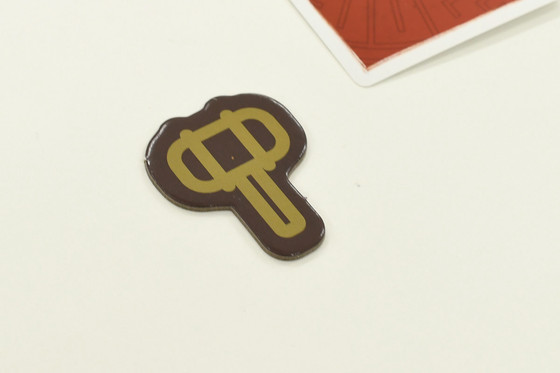
When the king is enthroned and the council is complete, politics begins. Just draw the bottom card from the dilemma deck and read the agenda on the surface. This time, the agenda is 'The slave woman brought by a frontier merchant may know where the legendary item' Golden Map 'is. Should this slave be released?'
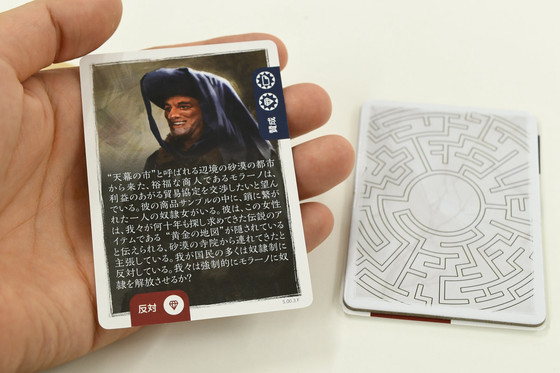
The balance at the bottom of the Kingdom board has a red circle 'opposite' and a blue circle 'agree'. Place the result markers on these red and blue circles as marked on the dilemma card. For example, in the following cases, 'If' Opposition 'is passed, economic power will be added, but if' Agree 'is passed, economic power will be deducted, and one chronicle sticker with a negative effect will be attached. It means that. Also, place three small power tokens in the center of the balance.

The council must express its opinion clockwise from the aristocrat with the leader token. A nobleman with a leader token said, 'Our economy is made up of slaves, so we shouldn't release it, we're against it.' If you want to show opposition, place one or more power tokens on the 'opposite' voting card from your hand.
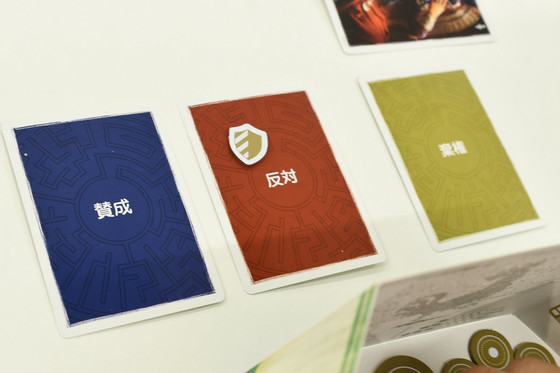
However, another aristocrat shouted, 'Slavery is prehistoric. I agree with the liberation of slaves because of the importance of human rights!' Place two power tokens.
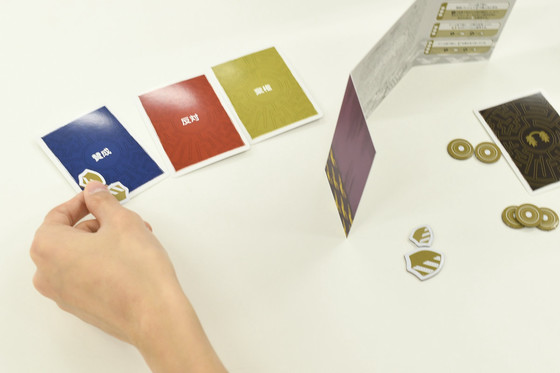
The aristocrat who placed the most power tokens at the time of voting will be handed a leader token by saying that he 'appealed the most power'. Voting ends 'when the person to the right of the leader token finishes voting', but if a nobleman who issues more power tokens appears by that time, the leader will move, so voting will not end in one round. There are many.
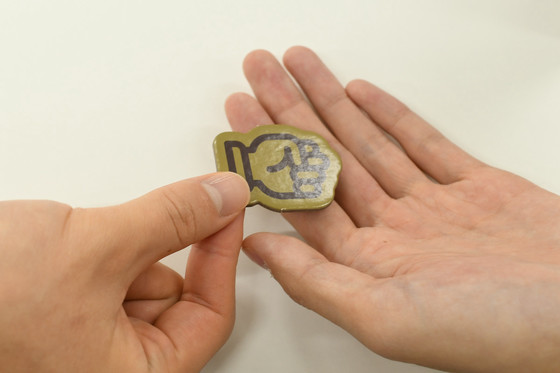
And the most important thing at the time of this vote is 'negotiation'. For example, 'I'll give you 3 coins, so why don't you vote for it?' 'I'll give you 5 coins, so if the votes antagonize, I'd like the mediator to vote for you.' Money moves with the speculation of each aristocrat.

Another aristocrat chose 'abstention', saying, 'No, I don't care what the slaves do, so I like it.' Aristocrats who choose to abstain can place a small coin token from the shared pool and declare either 'the right to get a balance power token' or 'the right to get a mediator token'.

In such a situation, the council gathered a total of 3 power tokens for 'agree' and a total of 3 power tokens for 'disagree', and the vote was completed. The decision of approval or disapproval is decided by the total number of power tokens, but this time it was the same number, so ...
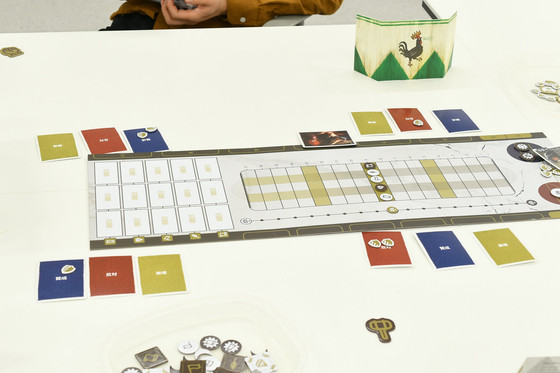
The aristocrat with the mediator token decides the victory or defeat. The mediator declared the adoption of 'opposite', saying that 'in view of the kingdom's economy, slaves should not be released.'
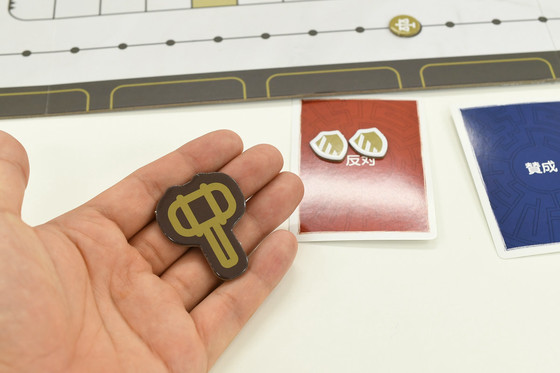
When the vote is over, the power token placed in the center of the balance will be distributed by the 'noble who abstained and declared the acquisition of power tokens'. This time there was only one abstainer, so the tokens were taken. If it is not divisible by distribution, the remainder will be carried over to the next time.
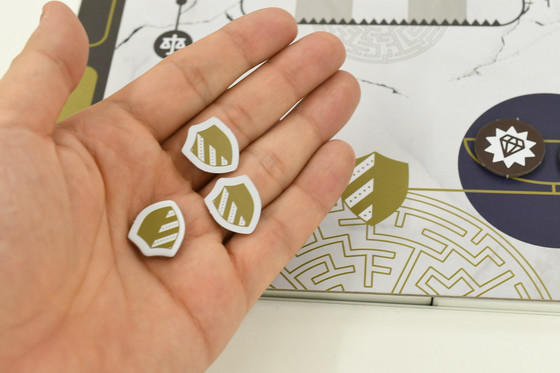
Then place the power token used for the adopted 'opposite' vote in the center of the balance. In other words, the power tokens used in the previous agenda will be distributed to the aristocrats who abstained in the next agenda. In addition, the power token of the side that was not adopted will be returned to the aristocrat who voted.
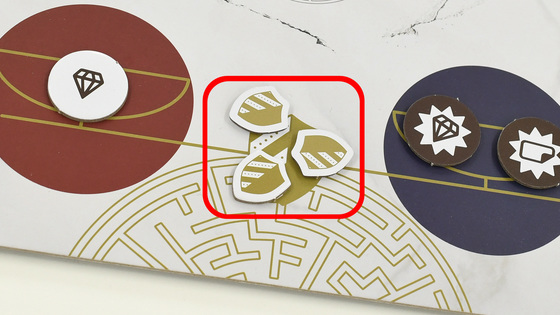
When you're done voting, flip the dilemma card over and read the 'opposite' storyline. As a result of opposition to the liberation of slaves, wealth was brought to the kingdom, and more information on the golden map was obtained from the merchants. In addition to the storyline, the dilemma card has 'economic power +2' and an envelope icon of '41'.

Since the economic power has increased by 2, move the resource token of the economic power up by 2 squares. In addition, the stability marker is moved by the same direction and movement amount of the moved resource marker.
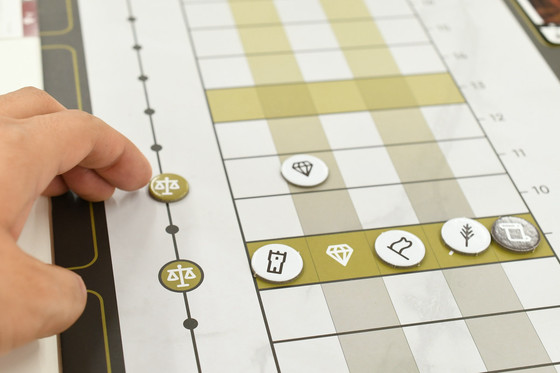
In addition, take out the envelope with the number 41 on it. The King's dilemma is characterized by the fact that the story branches according to the decision of the council, and when an envelope containing a new story opens according to the branch, the story progresses further.
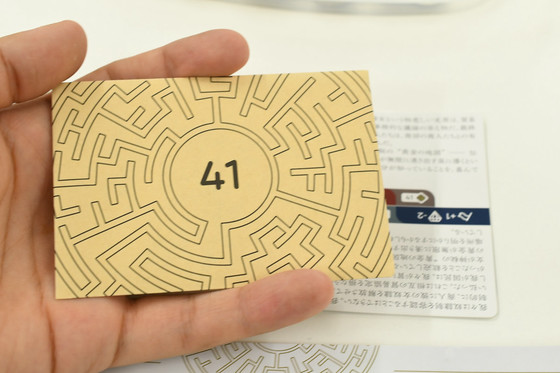
After removing the envelope, open it on the spot and read the story on the story card. Some story cards have a signature line ...
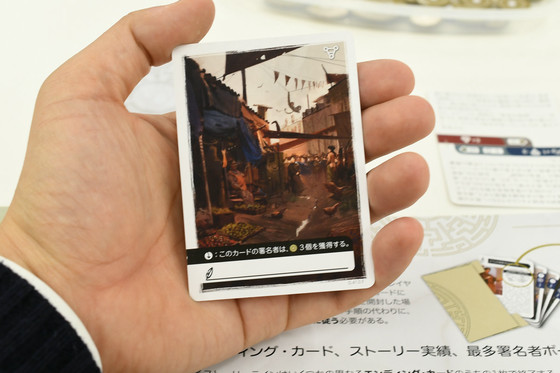
At that stage, the aristocrat with the leader token signs his family name. This card had a bonus that the signed aristocrat would get 3 small coin tokens.

A story card engraved with the signature of the Rose family who had this leader token will be placed in the same icon area on the Kingdom board. The name of the aristocrat who is responsible for the decision is firmly engraved in the story that tells the history of the kingdom.
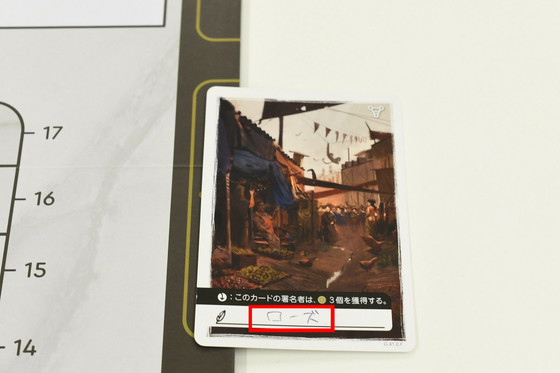
Depending on the envelope, an 'event card' with a candle icon may appear, which may require special event processing that is different from the usual one.
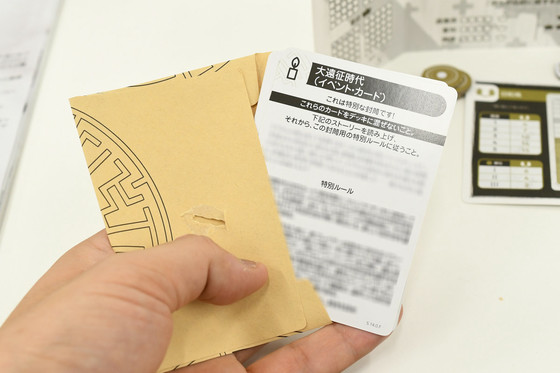
Also, the dilemma card that comes out of the envelope is shuffled by adding it to the dilemma deck. The king's worries are increasing steadily.

When you have finished processing the added envelopes, place them under the Kingdom board, making only the resulting side of the voted dilemma card visible.

Depending on the result of the dilemma card, a chronicle sticker may be attached.
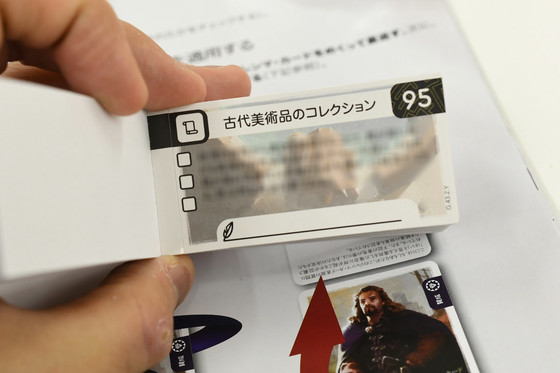
The chronicle sticker will also be signed by the aristocrat with the leader token at that time and will be stuck on the top of the kingdom board. It's a sticker, so once you put it on, you can't remove it anymore. There are two types of chronicle stickers, 'positive' and 'negative', which have various effects on the kingdom as the game progresses.
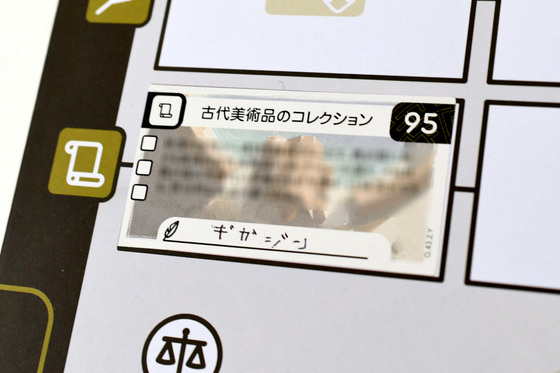
As you progress through the game and the story, more and more stickers will be attached to the Kingdom board.
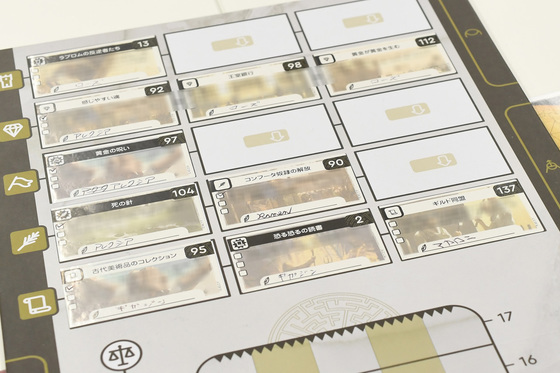
And if you manage the politics of the kingdom while solving the king's worries at the council, the story will progress and one story may be completed.
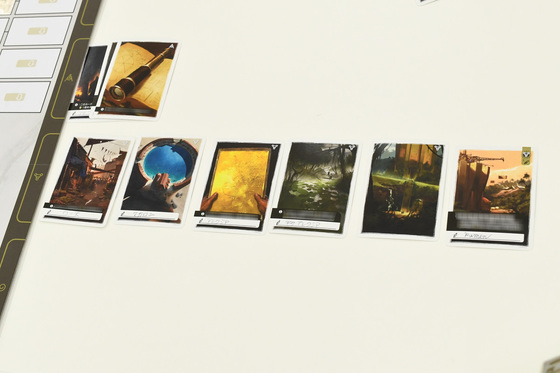
When the story is completed, the 'story achievement' of one of the 12 aristocrats will be released, and the effect that is beneficial to that aristocrat will be activated.
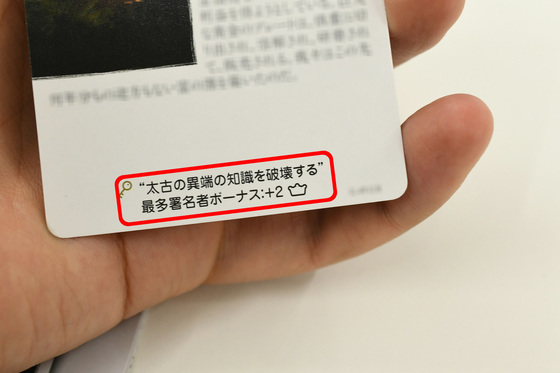
Since the name of the story achievement is written on their family screen, each aristocrat needs to roll around to actively make a verdict in his favor on the agenda that seems to be relevant. However, since we are playing with 5 people, it may not affect anyone's story achievements.
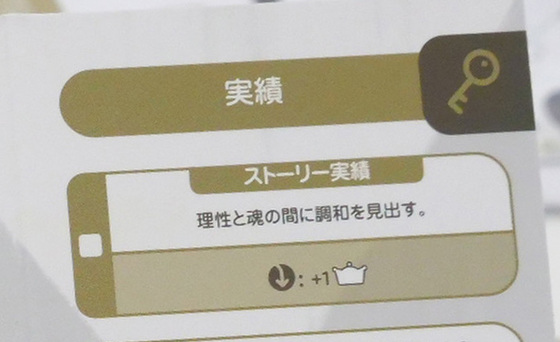
Insert the dilemma cards that have been discussed so that they are lined up under the kingdom card, and insert the 7th and subsequent cards in the area with the skull icon. When the card with the skull icon in the dilemma card is placed in the area of this skull icon, it becomes 'The King has demise' and one game is over.
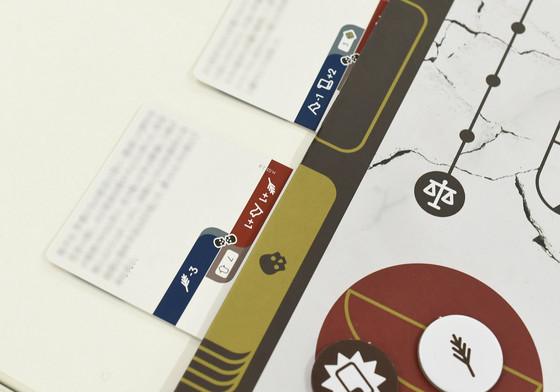
At this point, each aristocrat calculates his 'policy points'. Policy points are calculated based on the points of the secret policy card and the number of coin tokens and power tokens at the end. For example, in the 'opportunistic' secret policy card below, policy points are determined according to the number of resource markers in the lower half of the center.
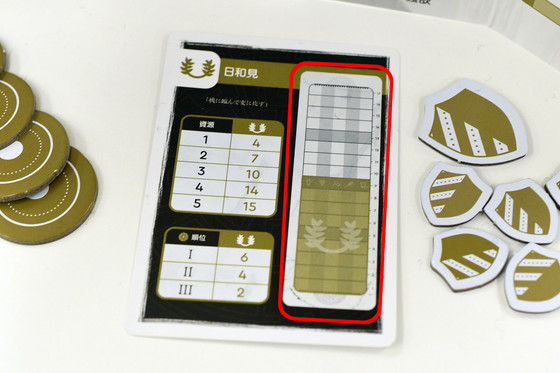
Looking at the Kingdom board, there are three resource markers below the center. In other words, you can get 10 policy points.
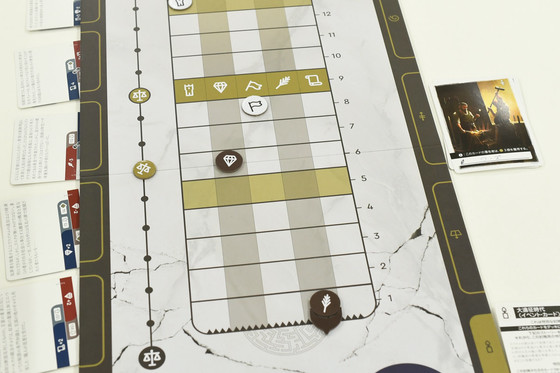
Also, as the game progresses, you can get bonus points and penalties with 'Public Policy' tokens. It's important to make a solid name in history, as this public policy token is related to whether or not you have signed a chronicle sticker.
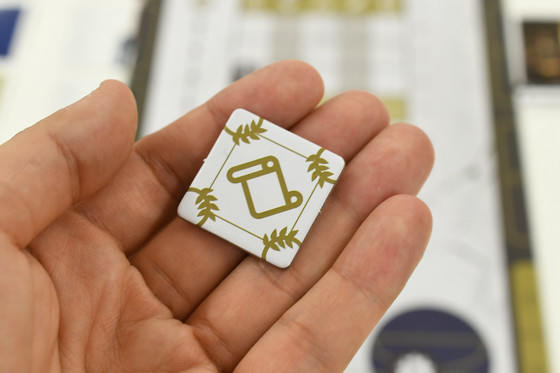
In the first play, there is no 'public policy', and coin tokens and power tokens get points according to the ranking of the number of coins. Write points in the table in the rule manual and decide the ranking according to the total points. The aristocrat who ranked first is given the right to decide the name of the next generation of kings.
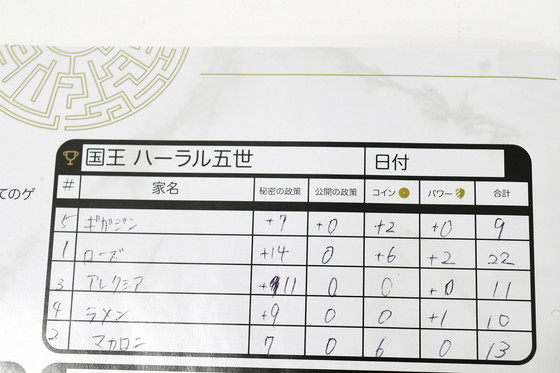
The Rose family, who brilliantly won first place, succeeded in enthroning the king who carried his own family name. If the aristocrat has gained power and money and has had a great influence on the politics of the kingdom, a nobleman with
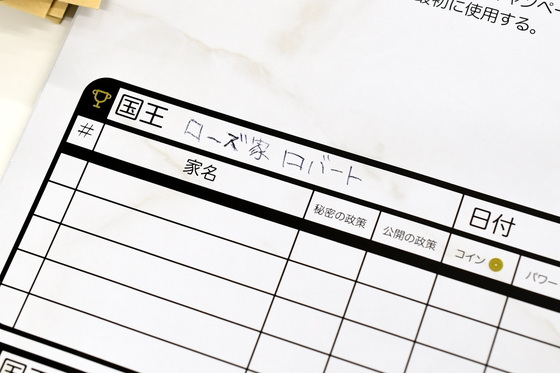
That's how one game ends. It takes a little time to understand the system, but about one game progresses in about one hour. By advancing role-playing according to the settings written on the family screen, 'that aristocrat is probably against this agenda because of that belief.' 'If you negotiate like this, you may get on. You can play as if you were an aristocrat who is dying behind the scenes of politics. The rules themselves are simple, and the impression is that everyone is reading one gamebook. Some editorial staff members who played the game said, 'It's a legacy system, so I felt it was a waste to not be able to redo it.'
In addition, you have to play many games to play to the end completely, and it is difficult to clear it in one play. In the Kings Dilemma, you can 'save' the play status so that you can play in the same situation next time. First, put the dilemma card that has been discussed into the slot of the inner box and discard it.

Then, store the dilemma deck as it is in the designated place.
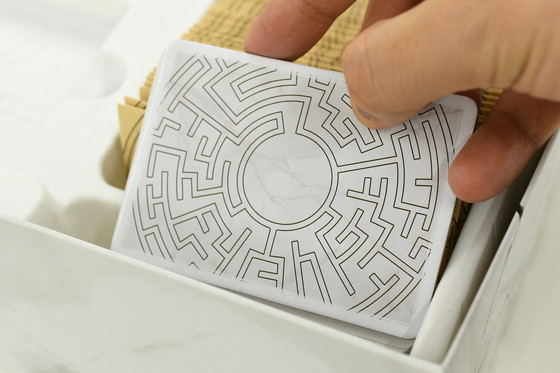
Story cards are stacked in order and stored in a 'save slot'. Now, if you pull out the dilemma deck and the story card as they are, you can play in the same situation next time.

If you stack the family screen, it will fit in the inner box as shown below.
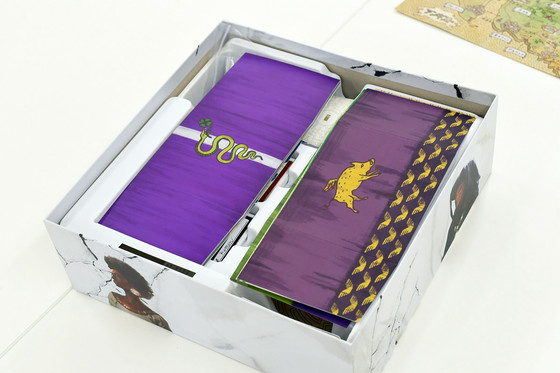
The Kings Dilemma Japanese version is also available on Amazon.co.jp and can be purchased for 7500 yen including tax at the time of writing the article.
Amazon | Hobby Japan King's Dilemma Japanese Version | Board Games | Toys
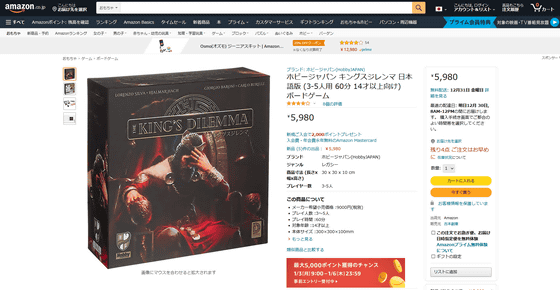
Related Posts:







